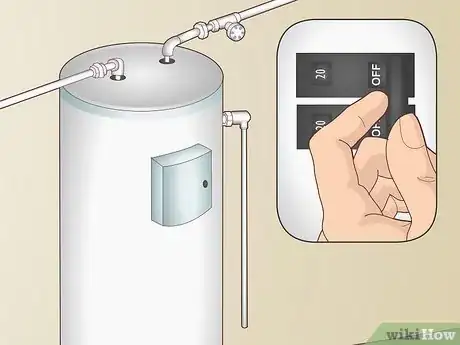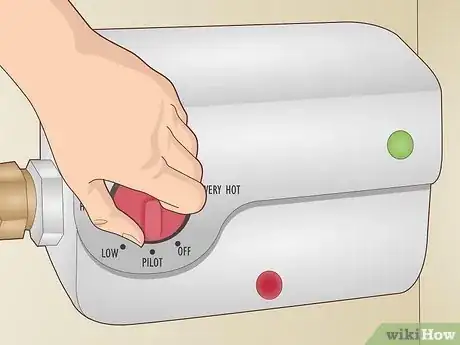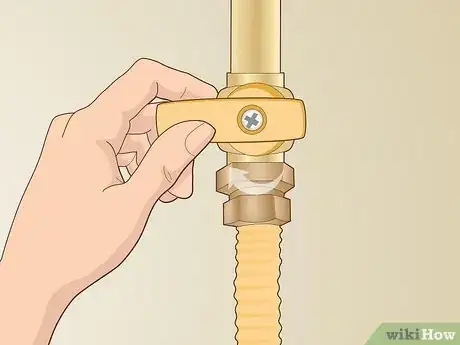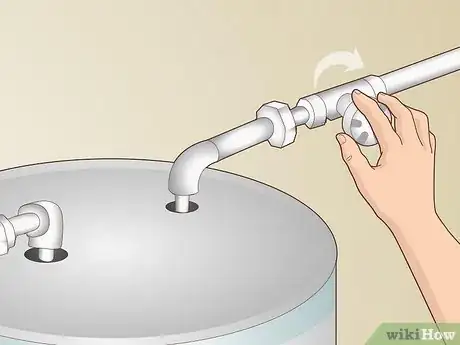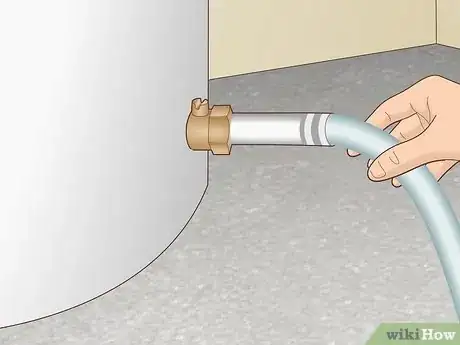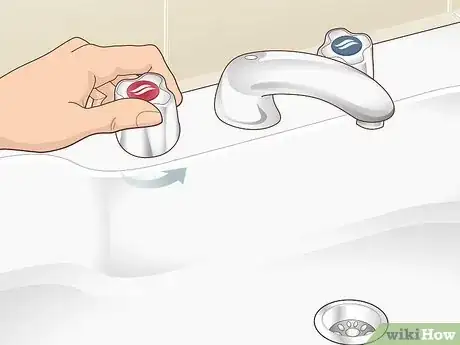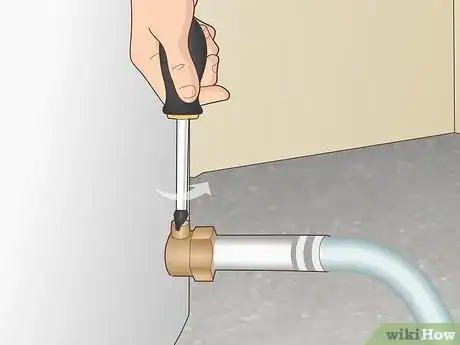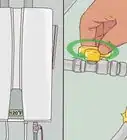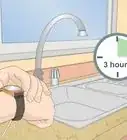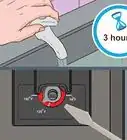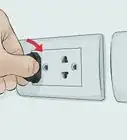This article was co-authored by Patrick Johns and by wikiHow staff writer, Hannah Madden. Patrick Johns is a Home Improvement Specialist and the Owner of CatchAll Handyman Services. With more than 28 years of experience, he has worked on a variety of home improvement projects, such as carpentry, plumbing, and door and window installations in both commercial and residential properties.
There are 7 references cited in this article, which can be found at the bottom of the page.
This article has been viewed 10,431 times.
Whether you’re trying to stop a leak or it’s just time for some maintenance, turning your water heater off is the first step to safely make repairs. Fortunately, turning your water heater off is fairly simple, and you can easily do it yourself without a professional. In this article, we’ll tell you exactly how to turn off both gas and electric water heaters, as well as how to drain the water out of them.
Steps
Turn the breaker off for electric heaters.
-
Switch the breaker that connects to your heater to turn it off. Electric heaters don’t have “on/off” dials as gas ones do. To turn off your electric heater, head to your electrical panel and find the breaker that connects to your water heater. Flip the breaker to turn off your water heater and any other appliances that are connected to that breaker.[1] X Research source
- Doing work on a water heater that is still connected to electricity is very dangerous. Be sure to flip the breaker and keep it off the whole time you’re working on an electric water heater.
Turn the temperature dial off for gas heaters.
-
Set the dial to “vacation mode” or “pilot” to quickly turn it off. If you have a gas water heater, look on the very front for a small panel with a dial on it (the dial will range from low to high). Turn the dial all the way down until it hits either vacation mode or pilot to turn the water heater off.[2] X Research source
- You can also turn the dial all the way to “off” if you’d like to. However, you’ll have to relight the pilot light to turn your water heater back on.
Turn off the gas supply line on a gas heater.
-
Stop the gas from coming into your water heater. If you’re working with a gas water heater, look for the gas supply line, which is usually yellow in color and near the bottom of the water heater. Switch the handle on the supply line to the “off” position to stop the gas.[3] X Research source
- When your handle is perpendicular to the gas pipe, it’s completely off.
- Turning off the gas supply line isn’t strictly necessary once your water heater is already turned off. However, it’s safer to turn off the gas supply, especially if you’re going to be making repairs.
Shut the water off on the main supply line.
-
Turn the water supply off to stop it from flowing in. Look for the water supply line, usually on the top right of the water heater. Turn the handle to the “off” position by twisting it counterclockwise as far as it will go.[4] X Research source
- If your handle is a gate valve (instead of a ball valve), twist the knob counterclockwise 5 to 6 times until you can’t turn it anymore.
Attach a garden hose to the heater to drain it.
-
Stop leaks fast by draining your water heater. Draining your heater isn’t totally necessary, but it will quickly get rid of all the water in your tank. Grab a garden hose and look for the threaded drain spigot near the bottom of your water heater. Attach the garden hose and direct the end toward a sump pump or outside.[5] X Research source
- Keep the drain spigot set to the “off” position for now—there’s one more step to complete before you can start draining your water heater.
Turn the hot water side of a faucet on in your home.
-
Allow air into the water heater so it can drain. Since your water heater is off, no new water is being supplied. Head to any faucet in your house and turn on the hot water side only. Keep it on for about 30 seconds, or until the water runs out. This will allow air in through the faucet so that the water can drain out of your tank.[6] X Research source
Open the drain valve with a screwdriver to drain the heater.
-
Turn the screw head 1/4 turn to start draining water. Grab a flat head screwdriver and slowly turn the screw head on your drain valve where your garden hose is attached. The 1/4 turn will line up the drain valve and the drain pipe so that water can start flowing out.[7] X Research source
- Once you open up the drain valve, water will start flowing out of the heater right away. Make sure the end of the garden hose is outside or directed into a sink or sump pump to collect all of the water.
- After you’ve made all of your repairs, you can turn your water heater back on.
Warnings
- Faulty water heaters can be very dangerous. If your water heater is broken or leaking, contact a professional plumber to come take a look at it right away.⧼thumbs_response⧽
You Might Also Like
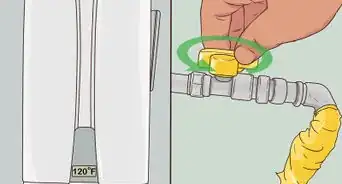
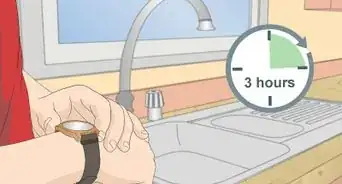
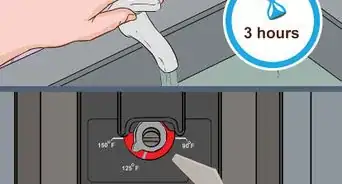
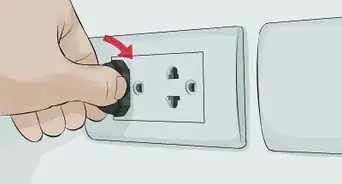
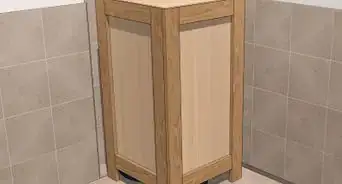
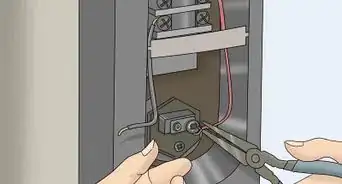
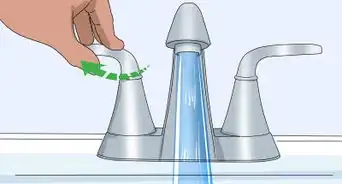

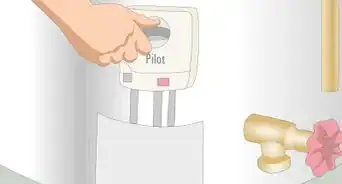
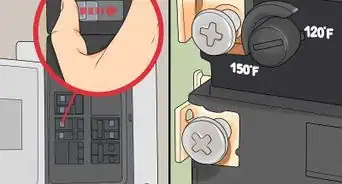
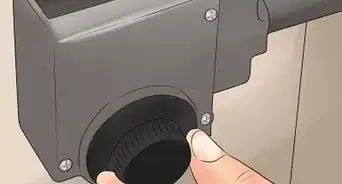
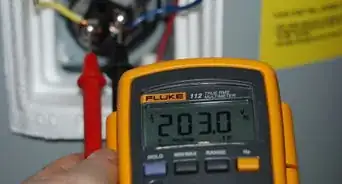
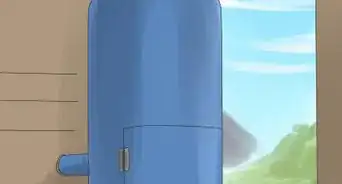
References
- ↑ https://htproducts.com/literature/lp-04.pdf
- ↑ https://www.youtube.com/watch?v=hs5N7HyDUWo&t=80s
- ↑ https://www.youtube.com/watch?v=wGkqgFoOl30&t=42s
- ↑ https://www.youtube.com/watch?v=hs5N7HyDUWo&t=117s
- ↑ https://www.youtube.com/watch?v=hs5N7HyDUWo&t=132s
- ↑ https://www.americanwaterheater.com/media/50883/323289-000.pdf
- ↑ https://www.youtube.com/watch?v=hs5N7HyDUWo&t=189s
About This Article

